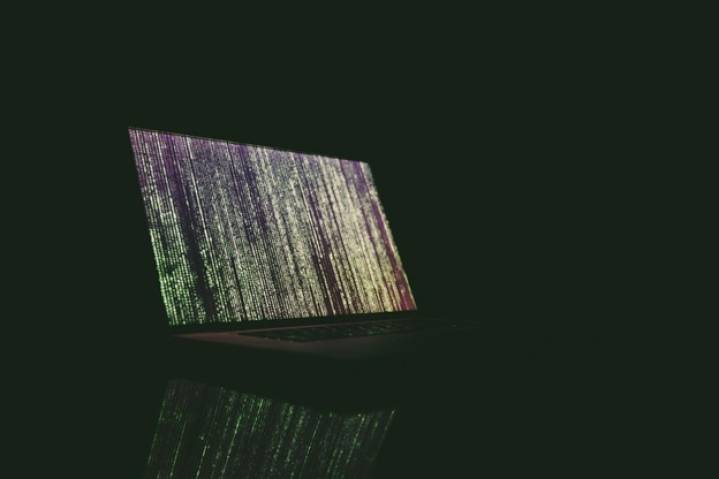


As a business or organization, you will likely be aware of the threat of data breaches. While we often associate breaches with high-profile cases like the Microsoft email server hacking back in 2021, small businesses are also heavily impacted by cybersecurity threats.
Luckily, there’s a way to protect the sensitive information of your business, employees and customers: with data erasure. This article will delve into the world of data erasure, from what it is to how you can use it to protect your company from virtual harm.

Data erasure, in the world of data management and security, is the deliberate and systematic process of permanently removing all digital information from a storage device. It's the digital equivalent of shredding confidential paper documents.
When you delete data from a device, it's not necessarily gone forever. Instead, it's typically marked as "deleted" and may remain recoverable until new data overwrites it. So, even though you think you’re wiping all sensitive data, your device may still store it. Leaving any room for potential recovery can pose a significant security risk.
Data erasure takes this risk head-on because it goes beyond mere deletion or formatting. Using specialized algorithms, it overwrites every piece of data on the storage medium multiple times. This results in a thorough digital clean slate, where the previous data is completely irretrievable.
As a business, you don’t just need to remove data from hardware like laptops or company phones. You also need to erase all your company software periodically to ensure data doesn’t fall into the wrong hands. This includes your office productivity software, communication tools, and security software. Even reliable VNC security systems need data erasure to remove sensitive information from storage.

Sensitive data getting into unauthorized hands is a major invasion of privacy. Whether it's personal information, medical records, financial details, or trade secrets, the individuals or organizations involved didn't sign up for this data exposure. This could damage the reputation of your brand, especially if private customer information is exposed on the internet.
Laws and regulations set by your country or jurisdiction will likely require strict protection of sensitive data. Falling short can result in hefty fines or even criminal charges. This is no joke. Businesses that go through a GDPR violation or a HIPAA breach investigation find it difficult to recover – both financially and reputationally.
If your business doesn’t perform data erasure regularly, you could face a data breach. This can have serious consequences for your business, your employees, and your loyal customers.
Cybercriminals can take sensitive data and cause damage with:
As we’ve discussed, data breaches can be catastrophic for organizations. When sensitive data is not properly erased, it can be accessible to unauthorized individuals who can exploit it maliciously. With just a few clicks of your mouse, you can ensure that deleted data is fully wiped from your devices.
Here’s how wiping your data periodically protects the sensitive information of your company, your staff, and your customers.
When organizations upgrade or retire their IT equipment, such as computers, servers, and storage devices, they often sell or dispose of these assets. If data is not thoroughly erased from these devices, it can be recovered by the new owners or scavengers who may buy them, potentially leading to data breaches.
If you have an IT support team that uses remote computer support, they may be able to access any remanence of data stored on the system when retiring your devices. Properly erasing all your data prevents it from being accidentally seen by your IT personnel.
Secure data erasure is not only essential for security but also for environmental responsibility. Recycling or disposing of electronic equipment without erasing data can result in sensitive information ending up in landfills, posing both security and environmental risks.

Deleting files or formatting drives may not completely remove data. In many cases, traces of the data can remain on storage devices. Data erasure tools use algorithms to overwrite data multiple times, making it extremely difficult or even impossible to recover.
Employees and contractors with access to sensitive data can pose an insider threat. Proper data erasure procedures help mitigate this risk by ensuring that data cannot be easily stolen or leaked by individuals with access to it.
For instance, if you have a customer support team using a VoIP virtual PBX, you should wipe all call records regularly to reduce the threat of your employees inadvertently accessing sensitive data.
Proper data erasure is a fundamental aspect of data lifecycle management. It ensures that data is retained only for as long as necessary and is securely destroyed when it reaches the end of its lifecycle. It also ensures that any data remanence is wiped so unauthorized parties cannot access sensitive information from retired hardware.
Mishandling sensitive information and experiencing data breaches can have a negative impact on an organization's brand and reputation. If you make it easy for cybercriminals to take and share your customer’s sensitive information, they will likely never use you again and may actively discourage other potential customers from working with you.

Now you know the power of data erasure, you’re ready to implement cybersecurity best practices to ensure you meet your obligations as a business. Here’s how to implement data erasure into your business practices to protect sensitive data.
Start by setting up clear data erasure policies. Think of them as the rulebook for your data security game. These policies should outline when and how data will be securely wiped.
Figure out what sensitive data you're dealing with. It could be customer records, proprietary information, or financial data. Knowing your assets is half the battle. With this information, you can prioritize what you should wipe.
Categorize your data based on how sensitive it is. This helps prioritize your erasure efforts and ensures you stay in control of your data. High-risk data should be at the top of the list.
Create data retention guidelines that define the appropriate duration for retaining various categories of data. This ensures you're not holding onto data longer than necessary.
Invest in top-notch data erasure tools and software. Look for solutions that comply with recognized standards to ensure a thorough job. Additionally, consider tools that encompass various aspects of data security, including cloud email security, to guarantee comprehensive protection for your sensitive information.
Provide thorough training to your team about the significance of data erasure. It's crucial for them to fully grasp the potential ramifications of data breaches and recognize the critical role that data erasure has in preventing this from happening.
Develop documented procedures for data erasure. These guides should detail how data can be securely wiped from various types of devices.
Regularly audit and monitor your data erasure processes. You want to be sure everything's running smoothly and securely.
When it's time to retire or recycle hardware, ensure data erasure is part of the process. This includes devices like laptops, servers, and even company smartphones.
For particularly sensitive data or complex erasure tasks, think about using professional data erasure services or certified vendors. They often provide certificates of data destruction for added peace of mind.
Regularly update your data erasure policies and procedures to keep up with changes in technology, regulations, and your business needs.

As a business, you have both an ethical and legal requirement to keep sensitive data from ending up in the wrong hands. Without paying attention to data erasure, you not only risk the future of your business, but the financial well-being – and trust – of your customers.
With customer data, cybercriminals can do untold damage: they can sell credit card information, perform a phishing attack, and even commit financial fraud. Simply wiping or destroying your hard drive won’t suffice.
You need to ensure that your data is inaccessible to third parties by having a carefully implemented data erasure plan in place. By following the step-by-step instructions in this article, you can rest assured that all sensitive information held by your business is protected.
Related Articles
Data Sanitization 5 Common Myths
Hardware Decommissioning Process: A 5-Step Checklist
The Ultimate Guide to Deleting Files Permanently
IRS Publication 4812 & How to Comply with Wiping Standards
DoD 5220.22-M Explained - Data Erasure Standards
NIST SP 800-88 Guidelines for Media Sanitization Explained
How to Delete Files on SSD
How to Wipe a Hard Drive on a Dead Computer / NVMe Drive / SSD Drive

Sam O’Brien is the Vice President of Marketing for RealVNC, leading providers of secure, reliable remote access solutions. He is a growth marketing expert with a product management and design background. Sam has a passion for innovation, growth, and marketing technology.
